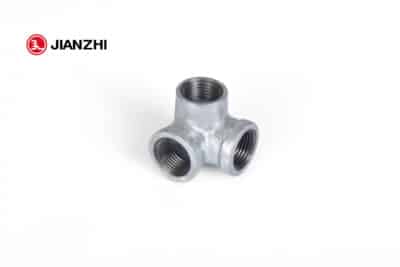Jianzhi, a leader in the manufacturing of high-quality pipe fittings, is pleased to announce the expansion of its product line with the introduction of precision-engineered 1/8 NPT pipe fittings. This addition underscores Jianzhi’s commitment to meeting the evolving needs of various industries by offering a comprehensive range of NPT pipe fittings that ensure reliable performance in demanding env’ironments.
The newly launched 1/8 NPT pipe fittings are designed to provide secure and leak-free connections, making them ideal for use in applications such as instrumentation, hydraulic systems, and fluid transfer systems. As with all Jianzhi products, these fittings are manufactured to the highest standards, ensuring durability, precision, and compatibility across different types of systems.

The Evolution of Screw Threads
In the nineteenth century, many different types of screw threads were required for hydraulic and pneumatic circuits as well as fastening components. Manufacturers consequently began to design their own fastening techniques. There were compatibility issues as a result. To solve the incompatibility issue, the English mechanical engineer and inventor Sir Joseph Whitworth created a standard threading method in 1841. The Whitworth thread shape has rounded roots and crests and is based on a thread angle of 55 degrees.
What is NPT thread?
In America, William Sellers set the standard for nuts, bolts, and screws which became the National Pipe Tapered Thread (NPT) in 1864. His 60 degree thread angle, in common use by early American clockmakers, enabled the American Industrial Revolution. These thread forms later became the American National Standard.
Whitworth threads were chosen to be self-sealing connecting threads for pipes, with at least one thread being cut with a taper. The British Standard Pipe thread (also known as the BSP Taper or BSP Parallel thread) was created from this. Today, low carbon steel pipes are joined using the Whitworth thread, which is typical worldwide.
What does NPT stand for?
The best known and most widely used connection where the pipe thread provides both the mechanical joint and the hydraulic seal is the American National Pipe Tapered Thread, also referred to as NPT. Npt pipe fitting has a tapered male and female thread that seals with Teflon tape or jointing compound.
Jianzhi’s extensive line of NPT pipe fittings is available in a variety of sizes, making it easy for customers to find the right fit for their specific needs. The company’s commitment to customer satisfaction is reflected in its rigorous testing protocols and its focus on providing products that perform under the most challenging conditions.
Pipe threads used in hydraulic circuits can be divided into two types:
Jointing threads are pipe threads for joints made pressure tight by sealing on the threads and are taper external and parallel or taper internal threads. The sealing effect is improved by using a jointing compound.
Fastening threads are pipe threads where pressure tight joints are not made on the threads. Both threads are parallel and sealing is affected by compression of a soft material onto the external thread, or a flat gasket.
What are the different sizes of NPT and other pipe threads?
The interior diameter (ID) or flow size determines the pipe thread size. For instance, “1/2–14 NPT” designates a pipe thread manufactured in accordance with the NPT standard, having a nominal inner diameter of 1/2 inch and 14 threads to the inch. The pipe has a left hand thread if “LH” is applied. Globally, the most typical pipe thread forms are:
NPT: American Standard Pipe Taper Thread
NPSC: American Standard Straight Coupling Pipe Thread
NPTR: American Standard Taper Railing Pipe Thread
NPSM: American Standard Straight Mechanical Pipe Thread
NPSL: American Standard Straight Locknut Pipe Thread
NPTF: American Standard Pipe Thread Tapered (Dryseal)
BSPP: British Standard Pipe Thread Parallel
BSPT: British Standard Pipe Thread Tapered
What does it mean when a pipe thread is tapered?
The word “tapered”in several of the above names points to the big difference between many pipe threads and those on bolts and screws.Numerous pipe threads are required to create both a leak-proof hydraulic seal and a mechanical joint. This is achieved by having the male’s tapered thread form match the female’s tapered thread form and by using pipe sealant to fill in any spaces between the two threads that may otherwise result in a spiral leak. The threads taper to a cone rather than a cylinder at the bottom. The taper measures 1/16 inch for every inch of length, or 3/4 inch in a foot.
A pipe thread may only screw into a fitting so far before jamming due to the taper. This distance is defined by the standard as the length of hand tight engagement, or the distance at which the pipe thread can be manually screwed in. The effective thread, or the length of the thread that creates the seal on a typical machined pipe thread, is another distance that is specified. It is more convenient for workers to know how many rotations to make by hand and how many with a wrench rather than these distances. When installing tapered pipe threads, whether made of plastic or metal, a basic guideline is to tighten the threads with your fingers plus one or two wrench turns.Torque installation values can be determined per application, but due to the variations involved in pipe joints such as dissimilar materials of male and female threads, type of sealants used, and internal variations in product wall thickness, a standard torque specification cannot be generically applied.
Jianzhi is a premier manufacturer and supplier of pipe fittings, specializing in NPT pipe fittings. With a focus on quality and innovation, Jianzhi provides a wide range of fittings that cater to the needs of various industries. The company is dedicated to delivering products that offer exceptional performance and durability, backed by decades of expertise in the field.
